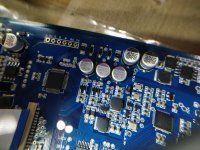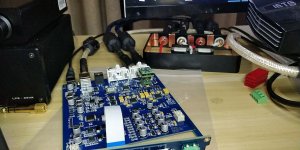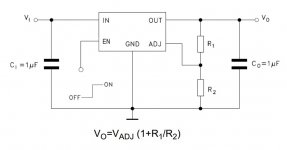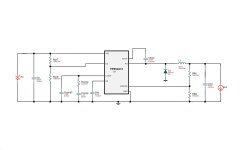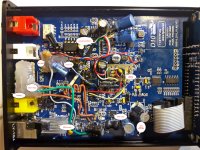That would be bad, a common mode approach should help that I would think. Thanks for that info, explains what I’ve been doing when bypassing rail to rail at times.
What I was thinking is that the digital junk may be close by and on the same ground such that it may be affecting the analog portions.
What I was thinking is that the digital junk may be close by and on the same ground such that it may be affecting the analog portions.
Last edited:
For digital junk imposing noise on the groundfill, I like to increase the +ve side power impedance with inductors and/or ferrite beads. This encourages the HF currents to resolve locally through decouplers.
Using a proper ground plane can help a lot: https://www.edn.com/electronics-blogs/signal-integrity/4325321/Ground-fill
Thanks for that info, explains what I’ve been doing when bypassing rail to rail at times.
Bypassing rail to rail when the supplies are balanced does prevent rail noise coupling to GND. But also if the load current is going to GND it doesn't provide any meaningful decoupling for the opamp - the supply rails just jiggle up and down more closely together. That's a conundrum I've not been able to solve hence my abandonment of balanced supplies when designing with opamps.
And here we go. Things just got interesting in this topic.
I'll put some electrolytes at the voltage rails of the opamp. I have a feeling this might make the sound a little less clinical than the tantalums and ceramic cap. I haven't removed the ceramic cap yet.
Don't know which value the ceramic cap is yet but the tantalums I put there are 33uf. I have some 10uf electrolytes. Maybe Some 47uf laying around. After spring festival I can get some 22uf or 47uf Nichicon KZs.
The sparkos works in class A. It would be interesting to put another opamp with CCS on it to see if that would result in similar performance. Which MUSE are we talking about ? I looked at the specs sheet of the opa1612.. and it's darn clean. I have a opa1642 fet opamp. And opa1688 laying around too. I think I still have schematics from you Richard for CCS with two jfets. I remember trying to put opa1612 into class A resulting into noise.. can't remember why.
I'll put some electrolytes at the voltage rails of the opamp. I have a feeling this might make the sound a little less clinical than the tantalums and ceramic cap. I haven't removed the ceramic cap yet.
Don't know which value the ceramic cap is yet but the tantalums I put there are 33uf. I have some 10uf electrolytes. Maybe Some 47uf laying around. After spring festival I can get some 22uf or 47uf Nichicon KZs.
The sparkos works in class A. It would be interesting to put another opamp with CCS on it to see if that would result in similar performance. Which MUSE are we talking about ? I looked at the specs sheet of the opa1612.. and it's darn clean. I have a opa1642 fet opamp. And opa1688 laying around too. I think I still have schematics from you Richard for CCS with two jfets. I remember trying to put opa1612 into class A resulting into noise.. can't remember why.
M a ybe the missing bass stems from the rest of your system, so that you are trying to get basslevels that are not on the recording
Replaced the three e-caps in USB section with Oscons.
Like discussed above diminishing returns. No real audible difference other than it didn't harm the sound in any way.
I did have some issues with the software freezing up sometimes when skipping to another song or within a song. I hope that if it's a hardware thing maybe it can be stabilized with improving the power supply sections. Who knows.
Didn't really look for a huge improvement here.
I also followed up on another suggeste mod putting a 100uf cap instead of a ceramic at the oscilators. Again by now the difference is hard to tell.
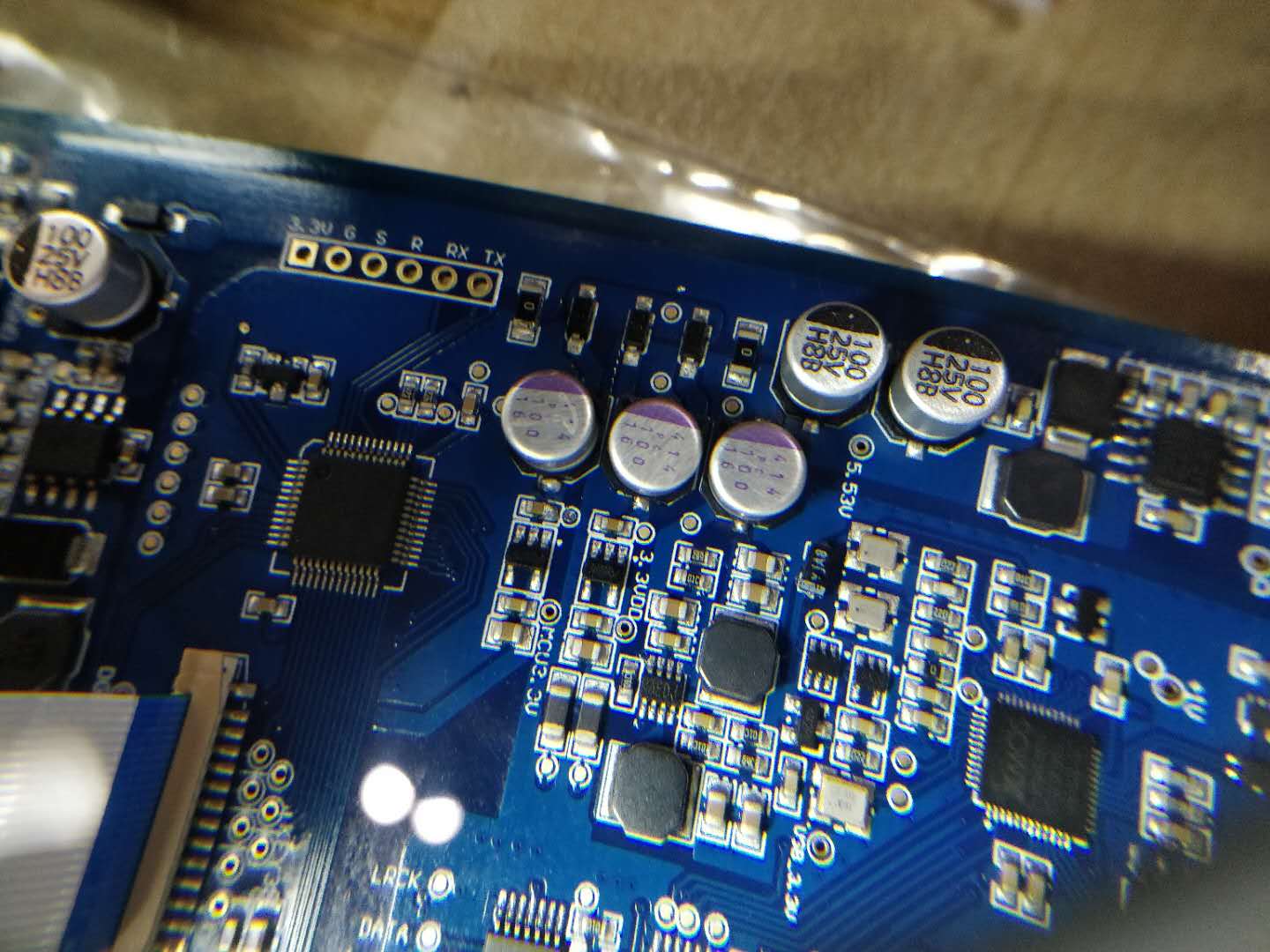
On another note I add in the transformers after the opamp. Next step would be connecting it before the opamp and see how that sounds but it was just a little try.
I did have to shortcut the ground signal or else it would keep humming. so ground is bypassing the transformer.
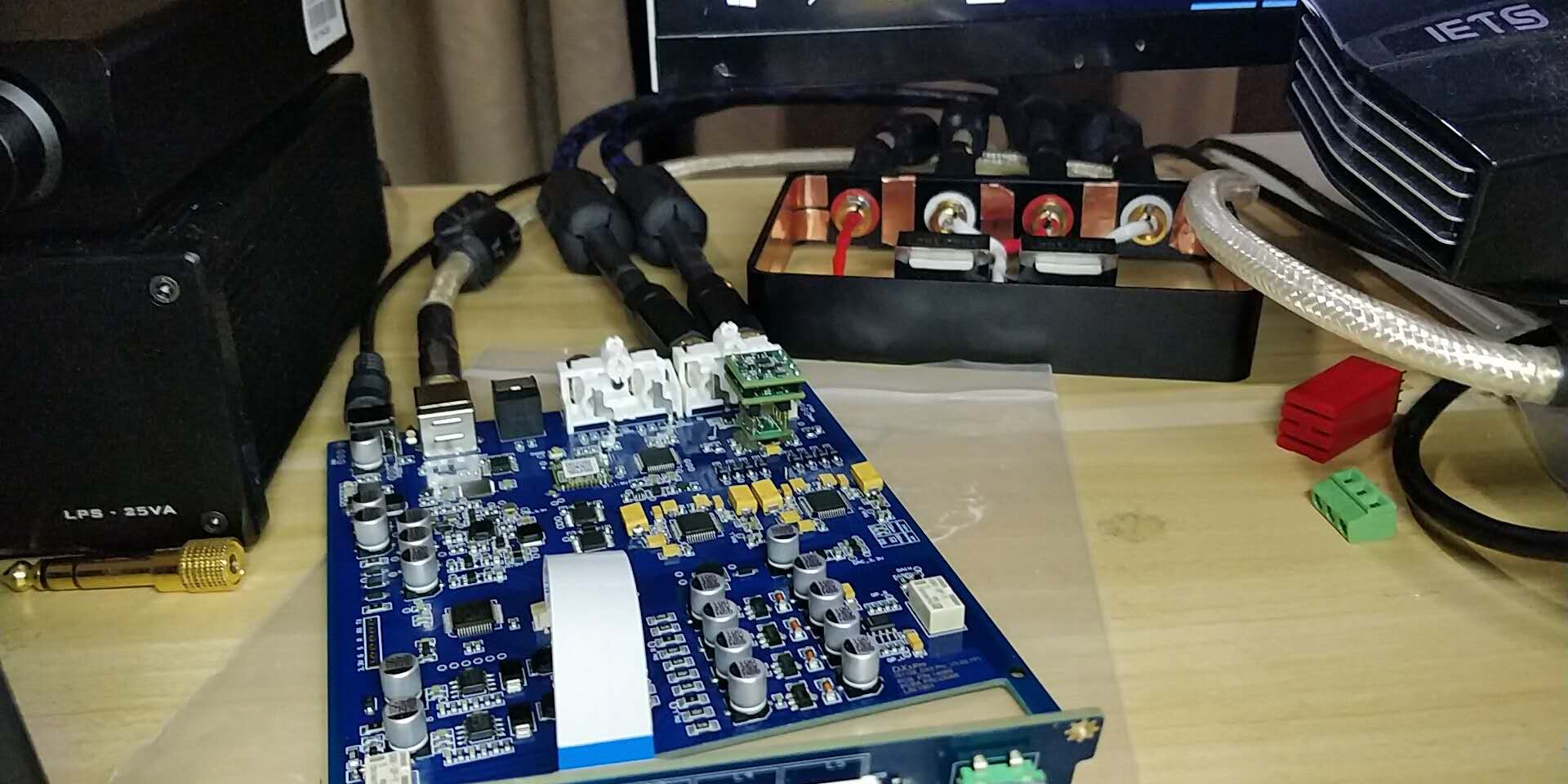
Result: it smoothened out the edgy highs a little bit. Still same transparancy i'd say.. Not much other to say about it. I'll have to do some more precise listening. Today I've just been playing music mostly and looking for new music and enjoying it.
Like discussed above diminishing returns. No real audible difference other than it didn't harm the sound in any way.
I did have some issues with the software freezing up sometimes when skipping to another song or within a song. I hope that if it's a hardware thing maybe it can be stabilized with improving the power supply sections. Who knows.
Didn't really look for a huge improvement here.
I also followed up on another suggeste mod putting a 100uf cap instead of a ceramic at the oscilators. Again by now the difference is hard to tell.
On another note I add in the transformers after the opamp. Next step would be connecting it before the opamp and see how that sounds but it was just a little try.
I did have to shortcut the ground signal or else it would keep humming. so ground is bypassing the transformer.
Result: it smoothened out the edgy highs a little bit. Still same transparancy i'd say.. Not much other to say about it. I'll have to do some more precise listening. Today I've just been playing music mostly and looking for new music and enjoying it.
Attachments
You should use transformers without opamp stage...this is benefit of transformers. This 4output capacitor stage is far away from good one.
It is fancy to use small value of resistors because of total SNR but using so big filter caps it is quite hard work for dac output..in terms of dynamic and big 3d stage, fluid relax analogue sound.
I measured ak4495 and ak4490 dacs, and they have very small noise on output so no need for too complex output filters.
It is fancy to use small value of resistors because of total SNR but using so big filter caps it is quite hard work for dac output..in terms of dynamic and big 3d stage, fluid relax analogue sound.
I measured ak4495 and ak4490 dacs, and they have very small noise on output so no need for too complex output filters.
Yep this is the next step to cut the opamp out. I just finished the transformers and decided to hang them in between to have try if you can read it.
Any recommendations on how to do it properly?
Any recommendations on how to do it properly?
For digital junk imposing noise on the groundfill, I like to increase the +ve side power impedance with inductors and/or ferrite beads. This encourages the HF currents to resolve locally through decouplers.
I’ve also used ferrites, but on the digital + supplies close to the load to prevent the noise from emanating.
M a ybe the missing bass stems from the rest of your system, so that you are trying to get basslevels that are not on the recording
It could be my LKS 9018 was exaggerating in comparisson you mean.
Could be.
I kind of now feel that the DX3 Pro has decent bass. At least it's super tight and dry.
XMOS XU208 needs clean 1V power to pin 39 (PLL_AVDD). So, feed it. Difference is remarkable (Topping D10).
OR
Make simple RC filter:
(From XMOS datasheet)
"The PLL_AVDD supply should be separated from the other noisier supplies on
the board. The PLL requires a very clean power supply, and a low pass filter (for example, a 4.7 Ω resistor and 100nF multi-layer ceramic capacitor) is recommended on this pin."
LDO - LDK130
R1 - 1.3kOhm
R2 - 5.6kOhm
OR
Make simple RC filter:
(From XMOS datasheet)
"The PLL_AVDD supply should be separated from the other noisier supplies on
the board. The PLL requires a very clean power supply, and a low pass filter (for example, a 4.7 Ω resistor and 100nF multi-layer ceramic capacitor) is recommended on this pin."
LDO - LDK130
R1 - 1.3kOhm
R2 - 5.6kOhm
Attachments
I have used lt3045. Sound is more fluid and less harsh. Problem is that 99% designs use internal 1v regulator and this is then filtered out with small ferrite and capacitor. But huge amount of noise goes into the gnd and this gnd is then polute all other lines trought caps back. You must use heatsink because 4v and almost 150ma is qute heat for a regulator.
Of course you must disconnect 1v supply that comes out of xmos ic.
Of course you must disconnect 1v supply that comes out of xmos ic.
XMOS XU208 needs clean 1V power to pin 39 (PLL_AVDD). So, feed it. Difference is remarkable (Topping D10).
Describe the difference please.. It's a lot of modifying but I have no idea what it will improve in terms of audio quality and an audible difference.
Subjectively...
Airness, better channel separation, sound is more natural. Sounds somehow light, soundstage is more transparent...
I am not sure, but I thing that best results we can achieve when we power separately DAC, DAC VREF (H, L) & XMOS and op amp's with linear PSU's.
SPSU is not for audio.
Airness, better channel separation, sound is more natural. Sounds somehow light, soundstage is more transparent...
I am not sure, but I thing that best results we can achieve when we power separately DAC, DAC VREF (H, L) & XMOS and op amp's with linear PSU's.
SPSU is not for audio.
Thanks mate. I read your posts. Personally I don't hear a difference between using digital volume control or 0db. I don't use the headphone amp and it doesn't seem to matter much for the line out. At least I can't hear a difference on my active speakers.
I'll experiment a bit and get back to you about it.
The sparkos works in class A. It would be interesting to put another opamp with CCS on it to see if that would result in similar performance. Which MUSE are we talking about ? I looked at the specs sheet of the opa1612.. and it's darn clean. I have a opa1642 fet opamp. And opa1688 laying around too. I think I still have schematics from you Richard for CCS with two jfets. I remember trying to put opa1612 into class A resulting into noise.. can't remember why.
I am thinking of MUSES8832.
OPA1612 has a super low THD. This is one main reason a lot of DACs got good measurement numbers these days when they put 1612 at the output.
The problem with 1612 is its output phase starts to shift sharply under 1KHz. This makes the mid bass a bit dry and thin.
On paper, looks like LME49720 is a good replacement. The THD is still very low and the phase shift keeps flat in the audio band. MUSES OP output phase runs up a bit in the HF area, still not too bad. Teac uses MUSES in their UD players which are AKM based. Probably MUSES and AKM are a good match? It's worth of a try.
- Home
- Source & Line
- Digital Line Level
- [Modding] Topping DX3 Pro
